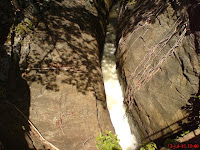Mahiyangana
 Mahiyangana is a an Ancient City in Sri Lanka relating to Lord Buddha. The Lord Buddha visited first to Mahiyangana in Sri Lanka. Situated at a great location by Mahaweli river Mahiyangana provide access several National parks, Bird watiching Locations and Sanctuaries. The Temple, Sorabora Wewa Tank, Dambana Veddhas, Minipe, Randenigala, Maduruoya, Wasgomuwa are major Attractions here.
Mahiyangana is a an Ancient City in Sri Lanka relating to Lord Buddha. The Lord Buddha visited first to Mahiyangana in Sri Lanka. Situated at a great location by Mahaweli river Mahiyangana provide access several National parks, Bird watiching Locations and Sanctuaries. The Temple, Sorabora Wewa Tank, Dambana Veddhas, Minipe, Randenigala, Maduruoya, Wasgomuwa are major Attractions here.
 Mahiyangana is a an Ancient City in Sri Lanka relating to Lord Buddha. The Lord Buddha visited first to Mahiyangana in Sri Lanka. Situated at a great location by Mahaweli river Mahiyangana provide access several National parks, Bird watiching Locations and Sanctuaries. The Temple, Sorabora Wewa Tank, Dambana Veddhas, Minipe, Randenigala, Maduruoya, Wasgomuwa are major Attractions here.
Mahiyangana is a an Ancient City in Sri Lanka relating to Lord Buddha. The Lord Buddha visited first to Mahiyangana in Sri Lanka. Situated at a great location by Mahaweli river Mahiyangana provide access several National parks, Bird watiching Locations and Sanctuaries. The Temple, Sorabora Wewa Tank, Dambana Veddhas, Minipe, Randenigala, Maduruoya, Wasgomuwa are major Attractions here.
The large & beautiful Mahiyangana Stupa a kilometer south of town signifies the spot a
t which the Buddha preached. Enshrined in the stupa is a lock of blue-black hair of Buddha & a relic of collarbone of Buddha. The area is very attractive-the park with the dagoba in its well kept & is overlooked by the hills on the far bank of the Mahaweli
History of Mahiyangana Raja Maha Viharaya
The stupa was built by prince Saman of deva tribe of pre-historic Lanka (other two tribes were Yakka & Naga) during the first visit of Buddha to the island. It was rebuilt by the hero of the nation King Dutugamunu of Ruhuna (161-136 BC) & has been restored many times by a succession of kings: King Voharaka Tissa (214-235 AD), King Sangabodhi (251-252 AD), King Sena the 2nd (847-900 AD), King Kassapa the 4th (912-928 AD), King Vijayabahu (1065-1119AD), King Narendrasinha (1705-1737 AD) & King Kirti Sri Rajasinha (1746-1778).
In the modern history too it was renovated several times: in 1851, by the Ven. Iddamalgoda Dhammpala, in 1980 by Ven. Yatawatte Sri Candajothi Maha Tera, in 1942 by Rt. Hon. D. S. Senanayake.
In the modern history too it was renovated several times: in 1851, by the Ven. Iddamalgoda Dhammpala, in 1980 by Ven. Yatawatte Sri Candajothi Maha Tera, in 1942 by Rt. Hon. D. S. Senanayake.
- Budhdhagaya Temple
This temple, which is located 1 km west of Mahiyangana clock tower, direction Kandy, is a replication of a famous temple in North India.
in the garden, belonging to the the temple, you can find a statue of Buddha, protected by a huge cobra, the so called " Muchalinda Naga daranaya"
 |
- Sorabora Lake

Sorabora Lake is an ancient man made irrigation work. Believed to have been built by King Dutugemunu's betel supplier named Bulata the giant. While king is in war against Indian invaders camped in Mahiyangana. Bulata supplies beetle to the campsite. Daily he passes this narrow waterway and keeping stones and soil connecting the banks. Several years later end the war and finish the dam of the lake as well. The sluice gate, which is an ingenious engineering example, has been built on a natural rock, using the skill and knowledge in ancient times. This is the only such sluice gate found in Sri Lanka. This sluice gate constructed around 162 BC is still in use. Around the lake there are many fishing villages are situated. The rice farming and fishing is the main income of the people.
- Mawaragala Monastery
Mawaragala is a long time abandoned hermitage at the edge of the jungle with a small temple, which is recently used again for meditation and to study buddhism. The buildings are belonging to the protected archeologic monuments.
Enormous natural rounded granite rocks are integrated in the architecture of a simple building.The skeleton of the chief adorns the main door. The whole property offers many small surprises to the visitor.
Enormous natural rounded granite rocks are integrated in the architecture of a simple building.The skeleton of the chief adorns the main door. The whole property offers many small surprises to the visitor.
- Dambana
This is a jungle area 16 km east of Mahiyangana, where the natives of Sri Lanka, "the Veddas" are living. As one of the oldest tribes of Asia, they call themselves "Wanniya laeto " (forest people) and retained their own religion, a kind of spirits cult. They wear their traditional weapons (axe, bow and arrow) until today, although hunting became more difficult by settlement projects and civilization influences. Today only a few remaining Veddas still manage to preserve their cultural identity. Since they cannot exist anymore from hunting, they are cultivating fields and demonstrating their traditional way of life for tourists. In the course of history, many of them have been more or less absorbed into mainstream society.



